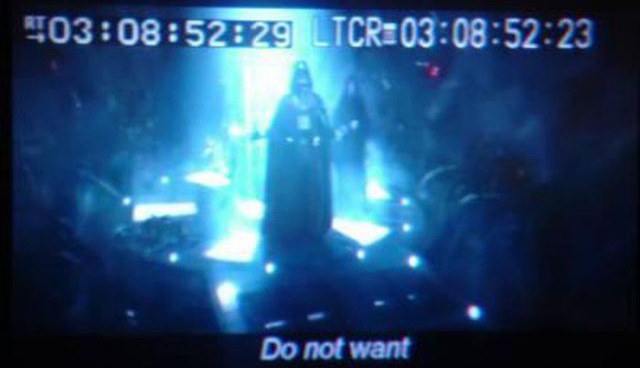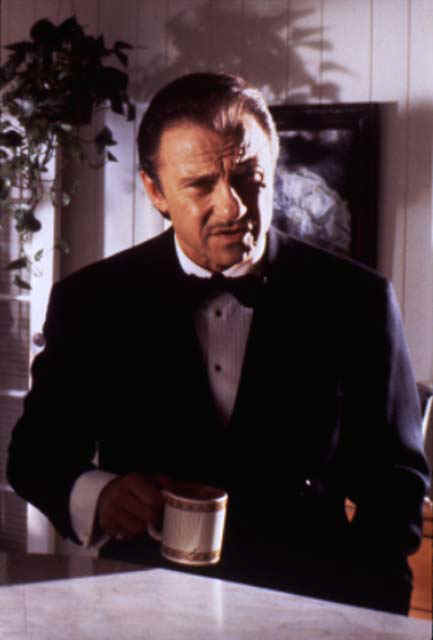Some riffs just can’t be avoided and the title’s one of them. My experience with the Big 3 can be considered to be a 3-phase one. Phase 1 was Bantam’s run that, along with Dark Horse Comics, got me interested in the EU in the early 1990s, around 1992. Phase 2 was the NJO / Prequel era of 1999-2006 and phase 3 is very minor due to a sense of despair at the late era direction favoured by Del Rey.
(That as fine an editor as Lester Del Rey’s name should become a kind of curse-word for SW fans is a sad outcome whichever way you slice it.)
I returned to SW in 1992, watched the films again, this time in Widescreen – yes, once upon a time that was something special – and was hooked. But where now? Zahn’s Thrawn books, only 2 of them, beckoned, as did Dark Empire and the rest was history. Bantam’s run was, by its nature, experimental – they had an unexpected universe they didn’t know what to do with so they experimented. Some of it worked, some of it did not, the former was raised up and the latter quietly forgotten.
Leia’s arc of rebuilding the Republic, dealing with numerous political hurdles, succeeding Mon Mothma and then making peace with a reformed Empire that she once despised was a triumph. Han’s arc was patchier, but his turn as General Solo in Allston’s X-Wing books was a high point, Zahn and Stackpole generally used the character effectively too. Where there is a void is once the kids are born! If Leia is too busy rebuilding the Republic then Han should have stepped in, I don’t see any reason for him not to except that children and their upbringing was perceived – and perhaps still is – as a woman’s job and men should not butt into that!
Why is this a big deal? One of the more rubbish plots in the later NJO had Jaina Solo, in a fit of teenager attitude, lay into Leia for not being around when she was younger. This never worked for me. The reason was simple. As a kid, my Dad was out at evening meetings a lot, the job demanded it – my Mum ensured my sisters and I knew why it was so. My parents had their own arrangement, my Dad looked after the bills, my Mum looked after us and it worked for them. Due to that, I had no reason to really resent him for being absent in that respect. I was old and smart enough to understand. Therefore, the notion that Jaina would not have been looked after, either by babysitters or Han, did not work. Plus, if she’s supposed to be smart, she’s smart enough to know why too. It would have been very satisfying for Leia to snap back she didn’t have to be, Han was! The only way Han and Leia’s marriage could work with two strong individuals is to divide up who’s doing what – Leia goes out for the career, Han is more free-wheeling but more in charge on the domestic front. Alas, the EU, at this early stage, lacked the courage to take this radical step. In many ways it’s understandable, but still a missed opportunity.
Luke’s arc of rebuilding the Jedi was not all that well-planned out, but, nonetheless, worked out well as the new Jedi play a key role in extinguishing the flames of the Caamas crisis depicted in the Hand of Thrawn books. It also, with reference to my fellow conspirator Lucas’s article on Jedi, Sith and Tunnel Vision, had Luke pull a blinder of a move. With the bulk of the information on the Jedi destroyed, Luke revives an ancient Jedi tradition he learns of from a rare Jedi holocron. In this tradition, one Master trained several students and often on a world where the Master had defeated and contained the dark side, with those places serving as testing grounds for apprentices.
1999 saw the start of the New Jedi Order project and it’s an undertaking that, even in hindsight, I can’t help but see as a missed opportunity. For all its successes, it still has a vast amount of untapped potential that it failed to tap due to squandering time on needless other plot strands. In some respects, the moves made for NJO were subsequently used again but with far less success for the Legacy of the Force and Fate of the Jedi series. For me where it went wrong was in seeking to emulate Babylon 5’s 5-year TV arc in book form. It was also, despite setting them up as a truly terrifying adversary that was far beyond the ability of the Jedi alone to defeat, far too protective of its villains, the Yuuzhan Vong. Cue the Republic that Leia had restored to working order demonstrating suicidal incompetence to the point of being utterly destroyed, then the same plot that required the heroes to be ineffective for 2 years, permitted them to be effective for 2 years and win. In the end the only thing that really made NJO work for me was the utterly unexpected success that was its finale, The Unifying Force. It did what all strong conclusions do – finished well but in doing so raised up its predecessor volumes as well. I’m never going to be a big fan of it, but the success of the finale and how well it used Luke, Han and Leia along with other, newer characters cannot be denied.
Onto phase 3 then and here all those flaws that blighted NJO, yet were held back enough to prevent them taking over, are permitted to bloom in all their poisonous glory. After reading the Dark Nest trilogy, one of the most blatant set-up series I’ve ever read, my interest in the big 3 was severely reduced. The first Legacy of the Force book went and destroyed it completely within the specific era. I simply could not credit or buy into the events and characterisations being depicted.
So the end of the line? Not quite. There have been a handful of earlier set books over the last 6 years. There were 2 books by Zahn, but while sold as being Luke, Han and Leia I don’t consider them to be so, they’re more supporting cast. No, the big release for the trio in recent years has to be 2009’s Luke Skywalker and the Shadows of Mindor by Matthew Stover. It’s a masterclass in how to do a complete story, without giving any character in a large cast short shrift and convince the reader that, all appearances to the contrary, their heroes are in real jeopardy! Sadly, there has been no further Stover Star Wars books.
So what does it boil down to? The characters need to develop without leaving their essential aspects behind. Luke as a Jedi who won’t surrender to the dark works fine, as does Leia as the one politician you can actually believe in, with Han as the ultimate wild card agent. There have been attempts in recent years to move them away from this, to making Leia a Jedi (she was already as of 1992 but that got forgot!) and Luke more of a manager but neither has really worked for me. That and the amount of time that has passed – around 40 years!

 Read More
Read More

